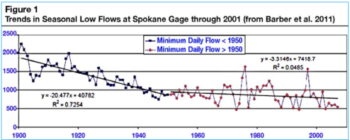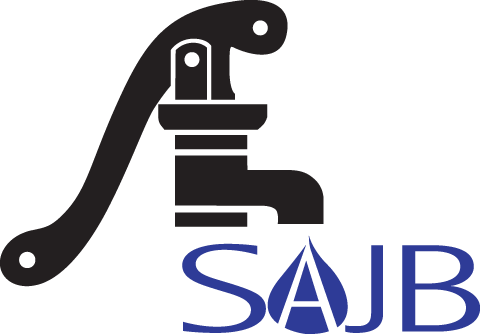The Water Report 12/15/17 – Climate Change and Summer Stream Flows
Climate Change & Summer Streamflows
Climate change influence on summer streamflows unanticipated discovery while studying other influences. by John Porcello, LHG, Walter Burt, LHG, & Jacob Gorski, PE (GSI Water Solutions, Portland, OR) & Ty Wick (Spokane Aquifer Joint Board, Spokane, WA)
Introduction
In recent years, much attention and discussion has occurred in the Spokane Valley of eastern Washington and the Rathdrum Prairie of northern Idaho regarding continued declines in the seasonal low flows of the Spokane River. Using streamflow data collected since 1900 at a gage in the lower part of the watershed (in downtown Spokane), a study by Washington State University (Barber and others, 2011) found that average daily river flow rates in August (the lowest flow month) have shown a gradual, but statistically significant, decline throughout the 20th century and the first decade of the 21st century (see Figure 1). 
This flow rate decline occurred despite: (1) less consumptive water loss as urbanization reduced the amount of agricultural water use; and (2) a shift in the region’s water use from primarily river water during the first half of the 20th century to exclusively groundwater from the Spokane Valley-Rathdrum Prairie (SVRP) Aquifer since the late 1960s. In 1978, the SVRP Aquifer was designated as a sole-source aquifer by the US Environmental Protection Agency (EPA). The SVRP Aquifer remains the sole source of water supply to the Spokane, Washington / Coeur d’Alene, Idaho metropolitan region and adjoining outlying areas, with the water being used for urban and agricultural uses over and outside of the aquifer’s footprint . Download the full report.
